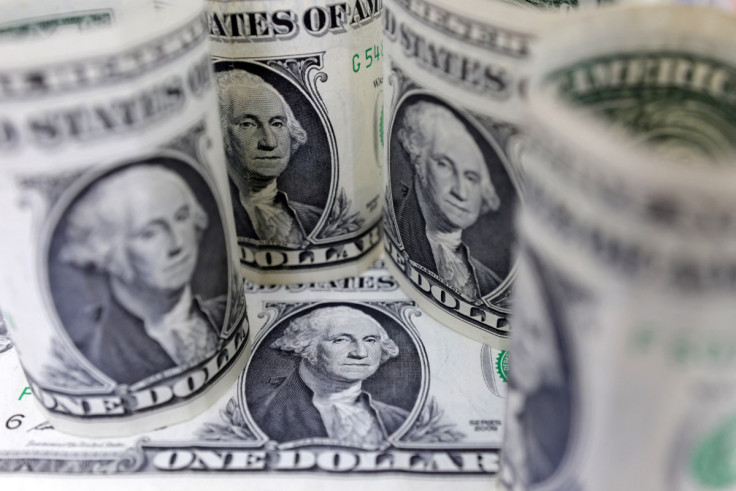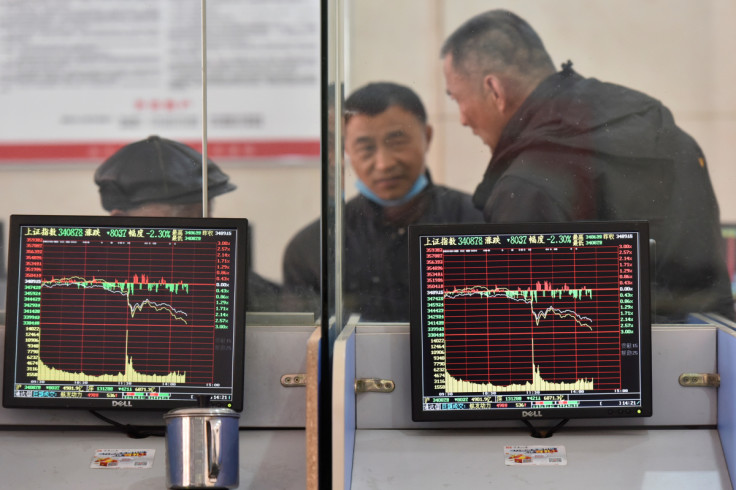Asia Stocks Stagger Into September As Dollar Spikes

Asian stocks slid and the dollar spiked on Thursday as investors greeted September by selling everything that was not nailed down after a month battered by concerns about aggressive rate hikes from global policymakers.
The sell-off looks set to hit European markets, with the pan-region Euro Stoxx 50 futures falling 0.9%, German DAX futures down 0.86% and FTSE futures 0.64% lower. S&P 500 futures dropped 0.7%, while Nasdaq futures declined 1.2%.
This month, both the U.S. Federal Reserve and the European Central Bank are expected to raise borrowing costs aggressively. Data overnight showed euro zone inflation had risen to another record high last month, solidifying the case for a 75 basis point (bps) rate hike from the ECB next week.
MSCI's broadest index of Asia-Pacific shares outside Japan slumped 1.6% to the lowest in six weeks, as risk sentiment took a turn for the worse.
Japan's Nikkei skidded 1.7% and Hong Kong's Hang Seng index fell 1.5% while Chinese blue-chips eked out a 0.1% gain, anchored by hopes for more economic stimulus from Beijing.
Regional purchasing managers' indexes from South Korea, Japan and China on Thursday all pointed to slowing global economic activity as rising interest rates, high inflation, the war in Ukraine and China's COVID curbs took a heavy toll.
"August has been a terrible month for balance fund investors with no diversification gains from holding a portfolio of equities and bonds," Rodrigo Catril, senior FX strategist at National Australia Bank, said in a note to clients.
"Month end yields no surprises, but rather an extension of the major themes seen during August with further increases in core global bond yields and weaker equities."
Overnight, Cleveland Fed President Loretta Mester said the U.S. central bank would need to boost interest rates somewhat above 4% by early next year and hold them there in order to bring inflation back down to the Fed's goal, and that the risks of recession over the next year or two had moved up.
U.S. stocks ended the month with the worst August performance in seven years. For the month, the Dow Jones Industrial Average fell 4.06%, the S&P 500 4.24% and the Nasdaq 4.64%.
Markets are awaiting U.S. non-farm payrolls data on Friday and they may not like a strong number if it supports the basis for a continuation of aggressive rate hikes, which could further boost the U.S. dollar.
"What are we telling our clients and stakeholders is that we should be watching the labour market... if the labour market starts to weaken, that's a sign that consumer sentiment is starting to weaken and that is a very strong indication that we're likely going into a recession scenario," said Paul Gruenwald, global chief economist at S&P Global Ratings.
In currency markets, the dollar advanced 0.4% against the Japanese yen to a 24-year high of 139.5 as investors braced for higher U.S. rates while expecting anchored Japanese rates to go nowhere anytime soon.
The euro and sterling also fell 0.4% against the greenback. [FRX/]
Hawkish Fed expectations saw Treasury yields hit fresh highs. The yield on benchmark two-year notes jumped 6 bps to the highest since late 2007, at 3.51%, while yield on 10-year bonds rose 6 bps to 3.20%.
U.S. crude fell 0.4% to $89.2 a barrel, while Brent crude declined 0.4% to $95.31 per barrel. Russia on Wednesday halted gas supplies via Europe's key supply route.
Gold was slightly lower. Spot gold was traded at $1703.9 per ounce. [GOL/]

Copyright Thomson Reuters. All rights reserved.





















